Austin Economic Indicators

November 5, 2021
The Austin economy continued to expand in September. The Austin Business-Cycle Index increased, led by strong payroll gains. Recent COVID-19 hospitalizations declined further from the latest peak in August. Regional consumer spending remained healthy, and existing-home sales increased after three months of declines.
Business-Cycle Index
The Austin Business-Cycle Index—a broad measure of economic activity—expanded a robust 12.5 percent on an annualized basis in September after increasing 9.2 percent in August (Chart 1). Job gains led the components.
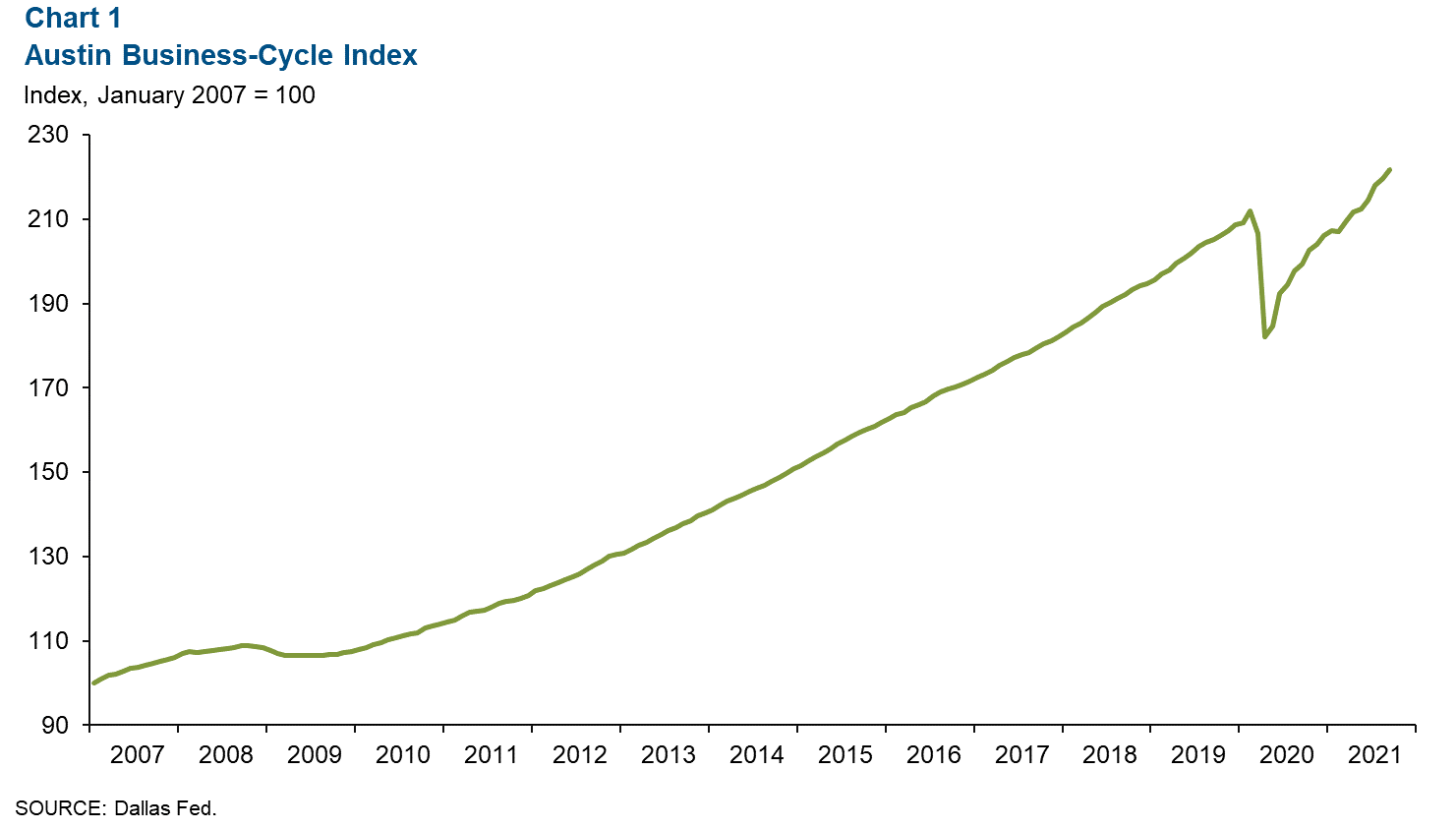
Labor Market
Unemployment Rate Unchanged
Austin’s unemployment rate remained at 3.7 percent in September (Chart 2). This is well below the state’s jobless rate of 5.6 percent and the nation’s rate of 4.8 percent. The metro labor force grew strongly in September at 5.1 percent—well above the state’s 3.3 percent—while the nation’s labor force contracted 1.4 percent.
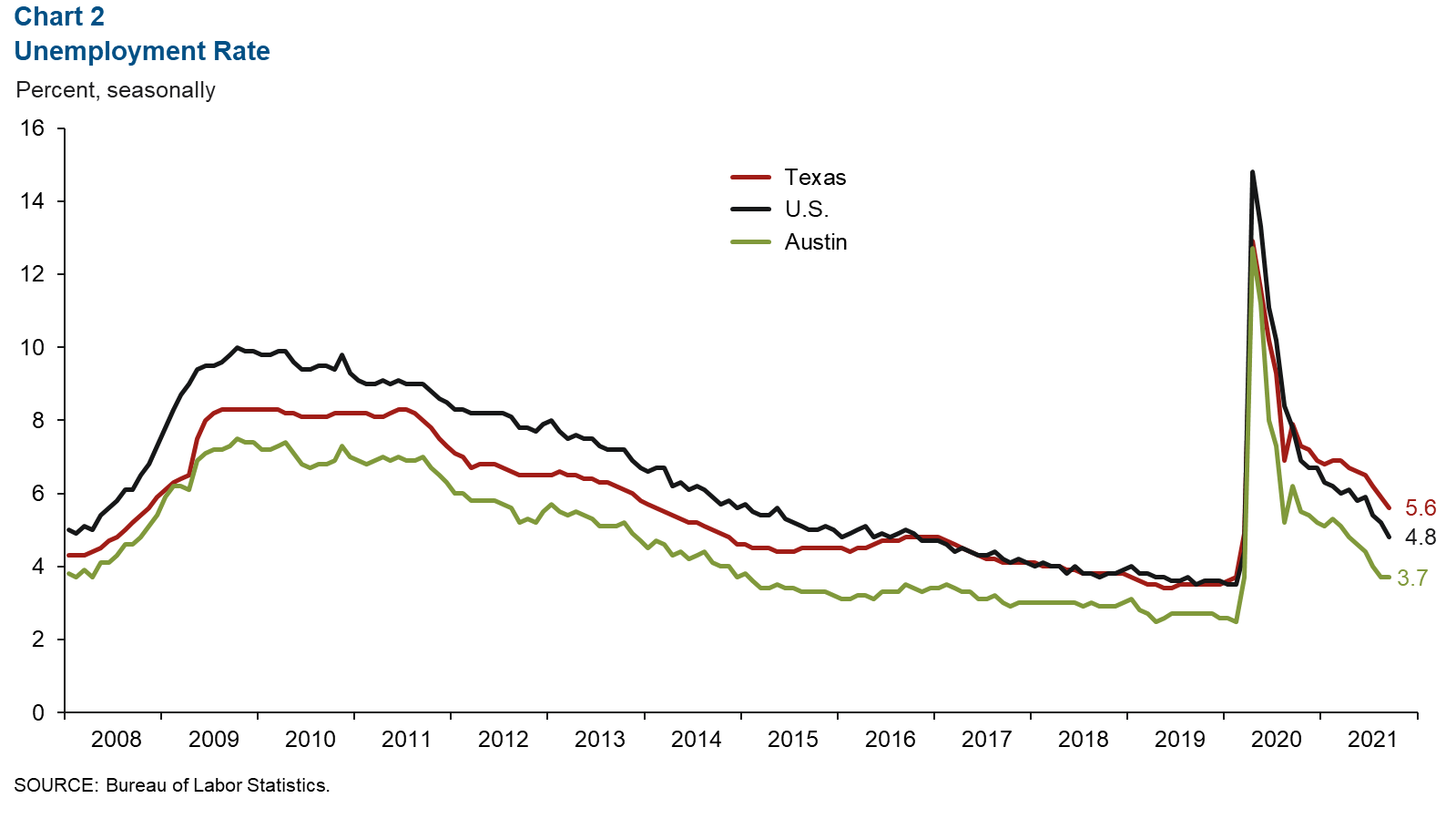
Third-Quarter Employment Positive Across Sectors
Austin payrolls strengthened an annualized 10.0 percent, or by 28,505 net jobs, in the third quarter (Chart 3). Leisure and hospitality led the sectors (up 32.6 percent, or 8,395 jobs), and was followed by financial activities (up 16.8 percent, or 2,800 jobs) and health and private education services (up 11.1 percent, or 3.503 jobs). As of September 2021, Austin payrolls are 1.8 percent above February 2020 levels; the region had recovered all 140,287 jobs lost at the onset of the pandemic by July 2021.
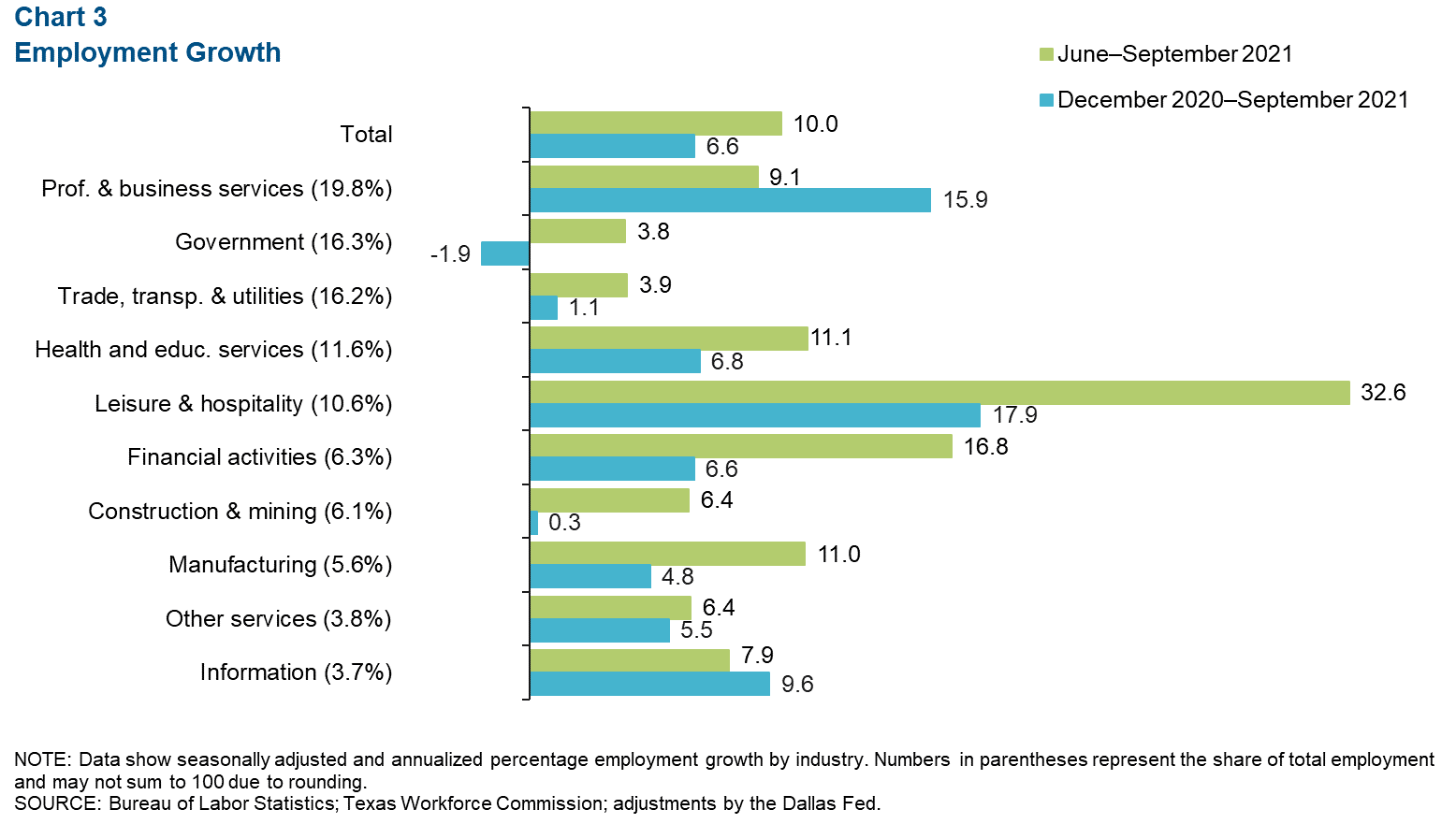
Consumer Spending
Consumer spending in Austin dipped slightly after reaching a record high during Labor Day weekend. In the metro’s most-populous county, Travis, credit and debit card spending has consistently surpassed January 2020 levels since July 2020, except for a dip during Winter Storm Uri in mid-February this year. As of Sept. 8, 2021, spending in the county was up a robust 39.7 percent relative to January 2020 (Chart 4). As of Oct. 17, spending in Texas was up 22.4 percent.
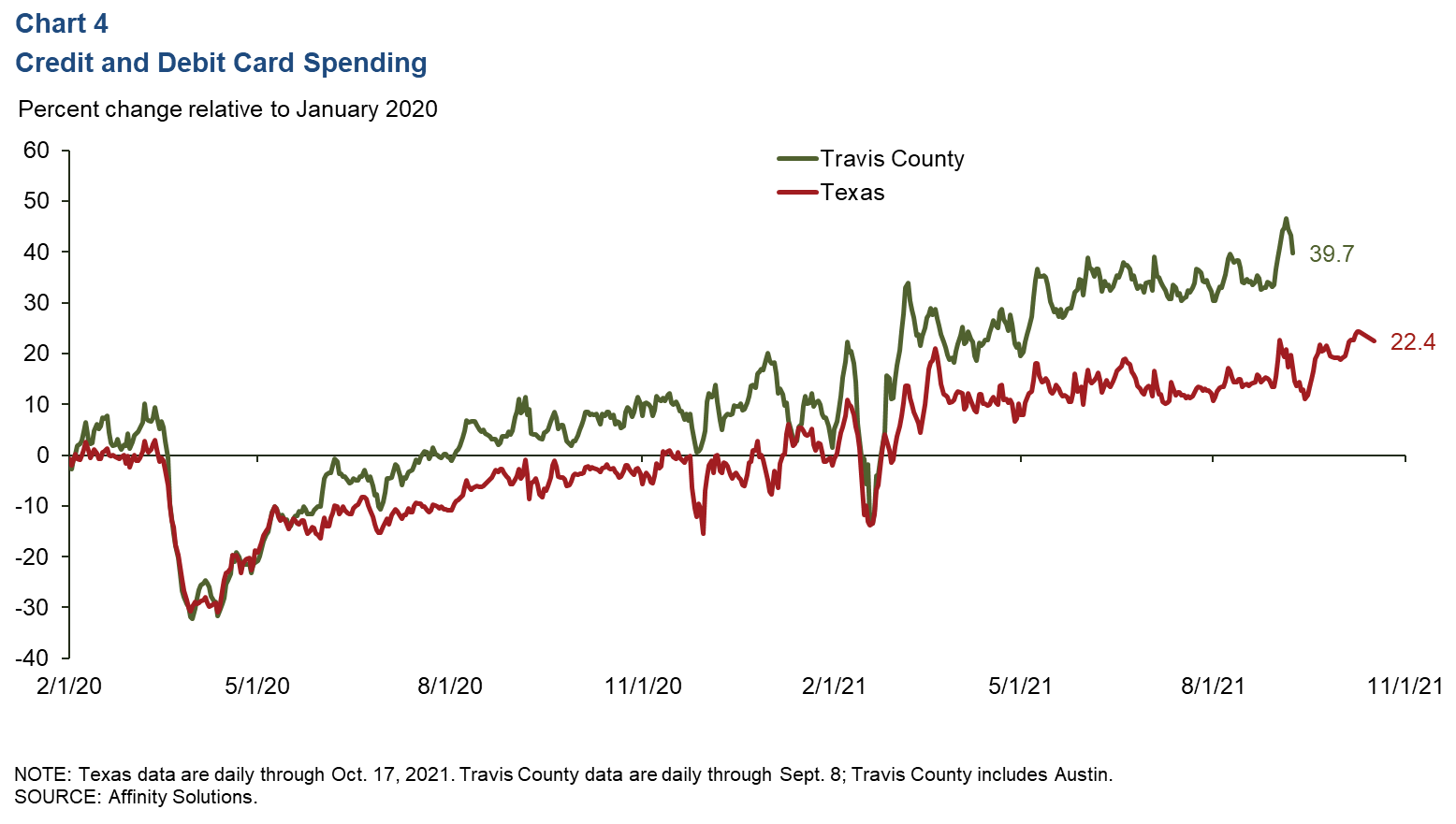
COVID-19 Statistics
The number of people currently hospitalized with COVID-19 in Austin and Texas continued to decline from their recent peaks in late August (Chart 5). As of Nov. 1, 167 people were hospitalized in Austin and 3,567 in Texas.
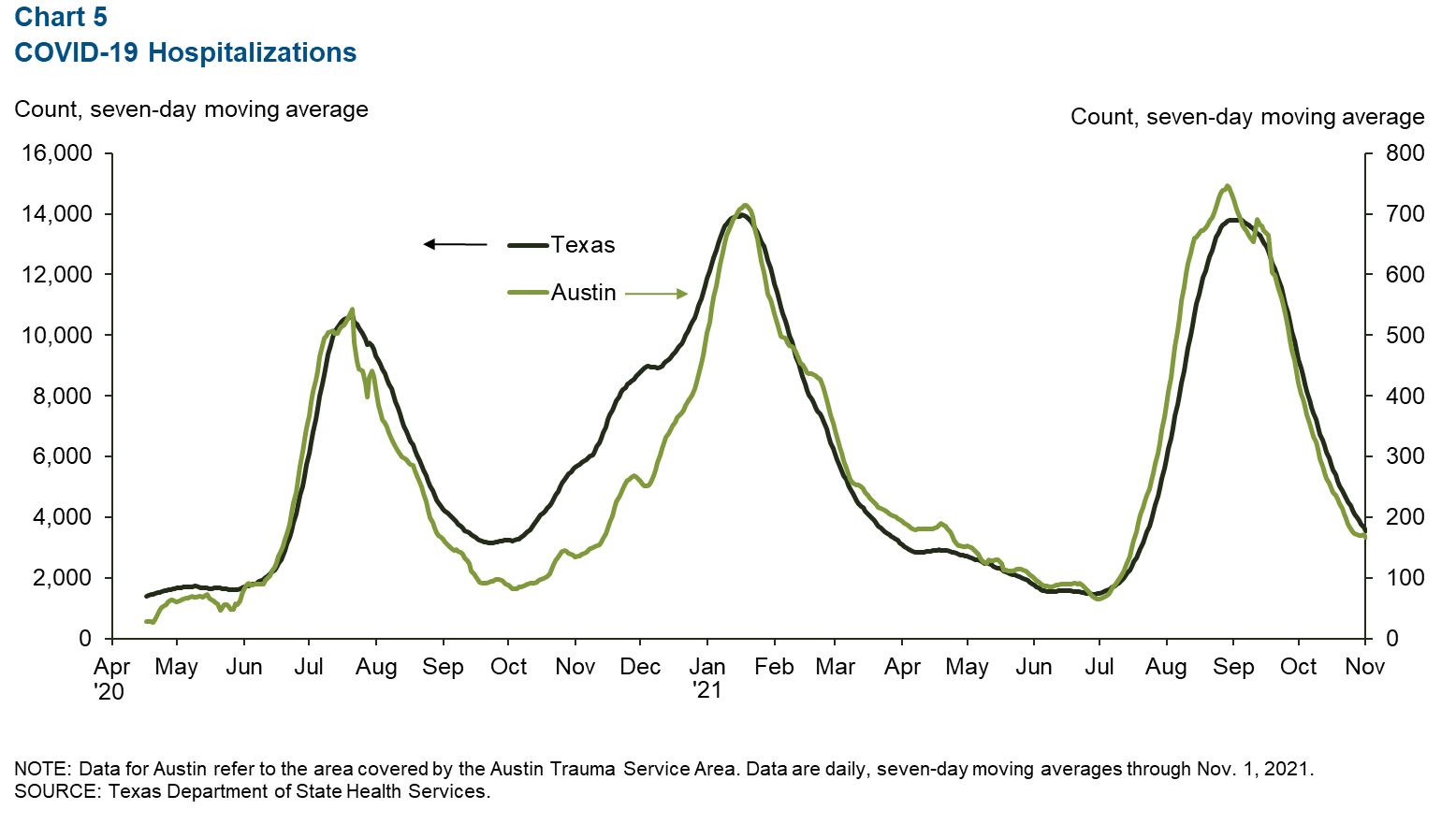
Real Estate
September existing-home sales in Austin advanced 8.4 percent after posting declines the previous three months (Chart 6). This compares with a 4.9 percent gain in the state. In the first nine months of the year, home sales are up 7.4 percent in the metro and 10.0 percent in the state relative to the same period in 2020. In September, the median price of homes sold was $454,254 in the metro, a 21.0 percent rise year over year, compared with $309,625 in Texas, a 10.6 percent increase.
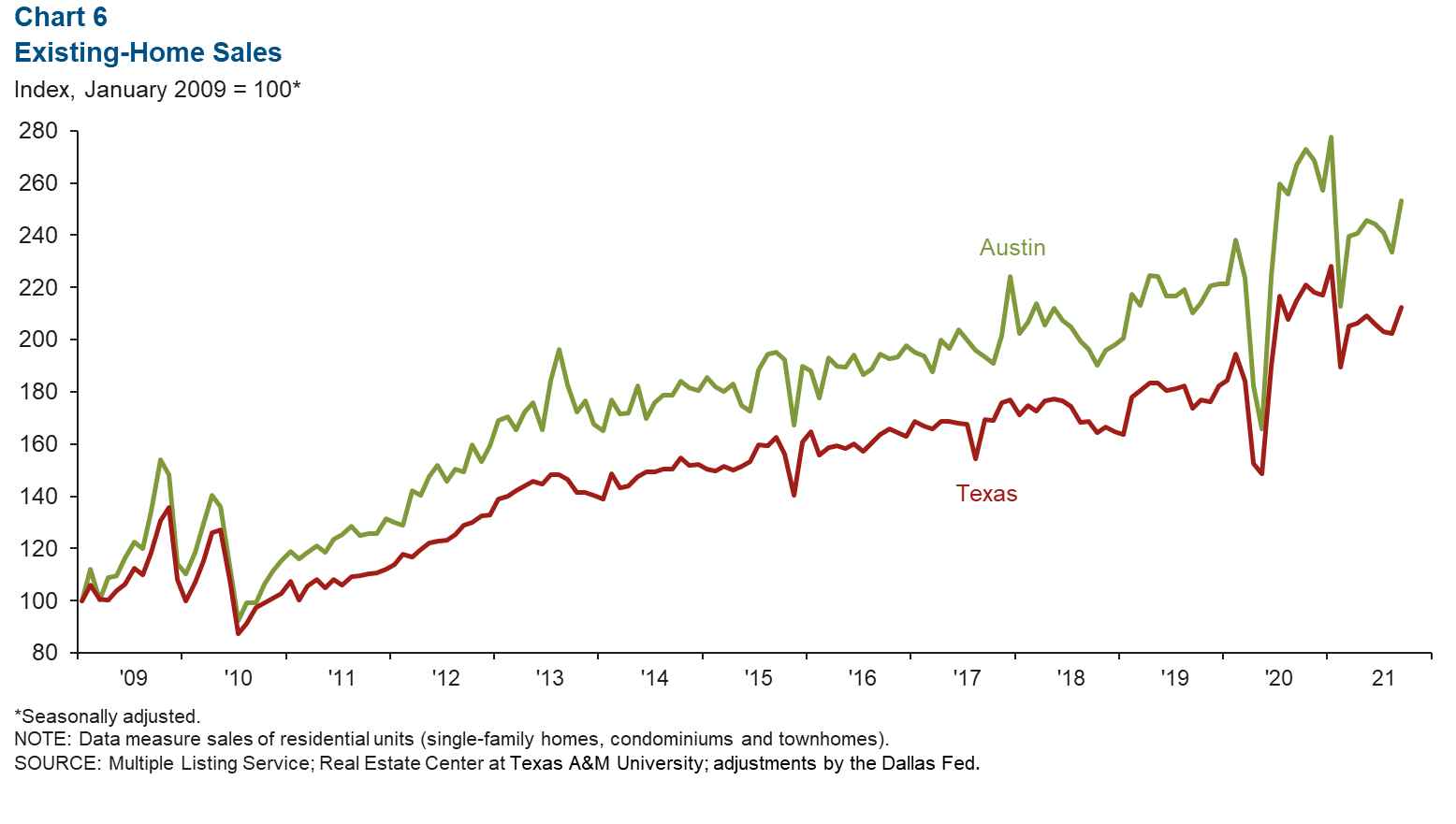
NOTE: Data may not match previously published numbers due to revisions.
About Austin Economic Indicators
Questions can be addressed to Judy Teng at judy.teng@dal.frb.org. Austin Economic Indicators is released on the first Thursday of every month.